Time To Recognize That Hyenas Are Nice, Not Nasty
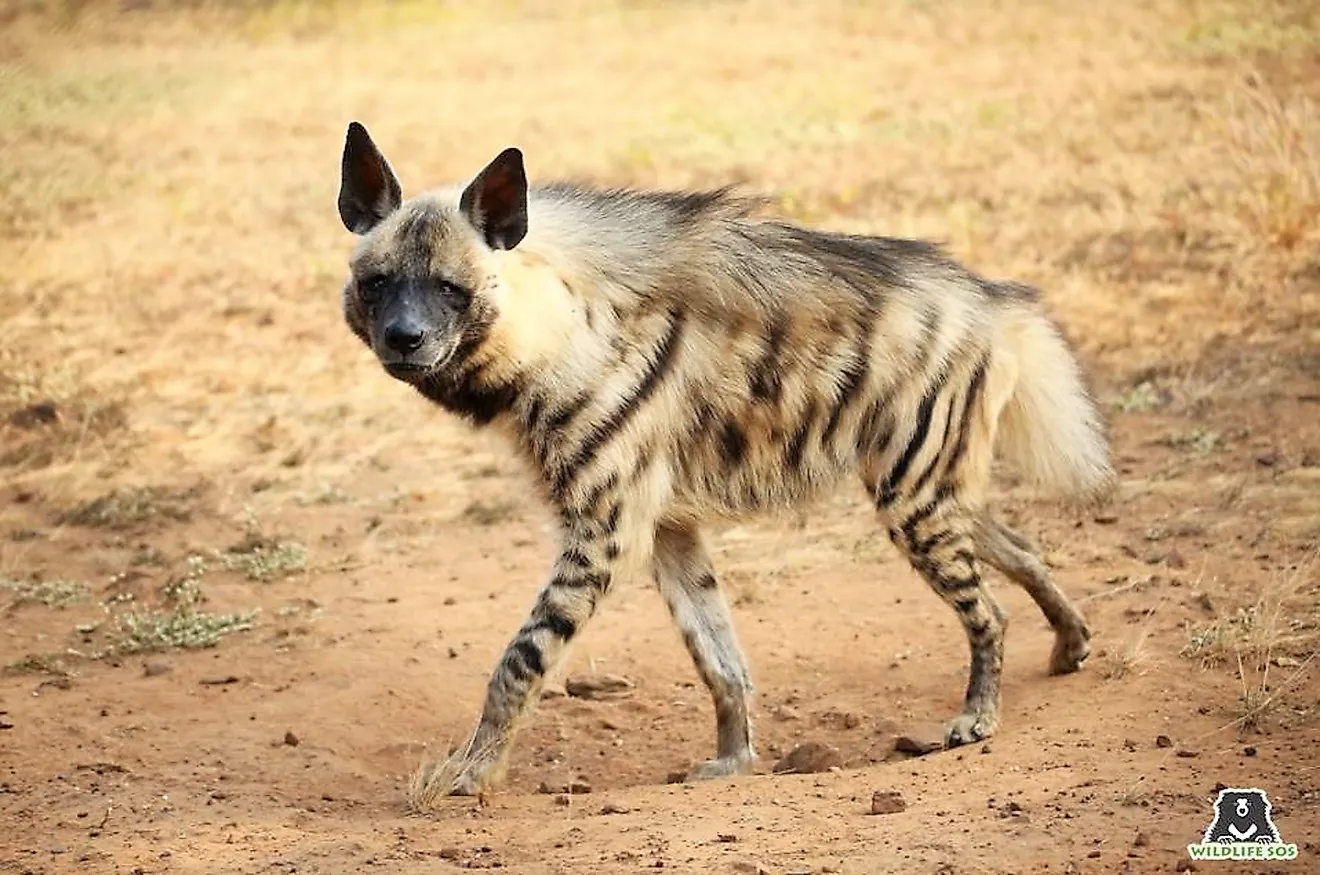
Sly and sleazy, malicious and menacing, ugly and evil - these are only some of the vilest of titles the human world has granted to the hyenas. This group of four living species of feliform carnivores belonging to the Hyaenidae family has been left unloved by Homo sapiens throughout history. But for those who have strived to know these animals up close and personal, they represent some of the finest of qualities in the Animal Kingdom. The article here discusses why it is time we stop misunderstanding the hyenas and shower some attention and tenderness to these wild beasts.
With valuable inputs from Wildlife SOS, a non-profit associated with the rescue, care, rehabilitation, and conservation of wildlife in India, the article also focusses on the conservation issues tormenting the striped hyena species in India.
Hyenas Of The World
About 12 to 6 million years back, the Hyaenids were much diverse with around 24 species with a sprawling range through Eurasia and Africa. Today, the Hyaenidae family includes only four extant species - the striped hyena (Hyaena hyaena), the spotted hyena (Crocuta crocuta), the brown hyena (Parahyaena brunnea), and the aardwolf (Proteles cristata).
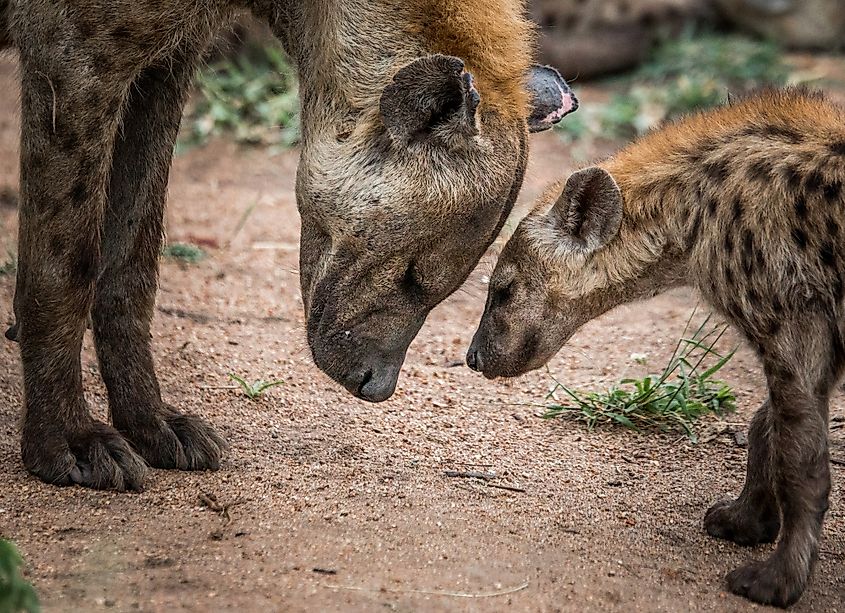
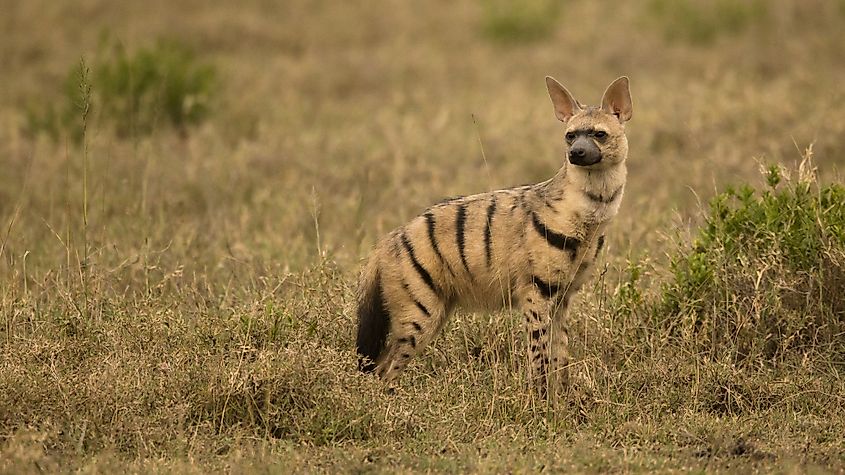
Except for the striped hyena that has a wider distribution, the remaining three species are limited to Africa. The striped hyena's range stretches from North and East Africa to West and Central Asia, and further east to the Indian subcontinent. They occupy a wide range of habitats including savanna, grassland, shrubland, forest, and inland wetlands.
"In India, striped hyenas occur in arid and semi-arid ecosystems, as well as in the extremely wet regions of the south-western coast of India. They can be found in Rajasthan, Uttar Pradesh, Madhya Pradesh, Maharashtra, Gujarat, and Karnataka," informed Kartick Satyanarayan, the Co-founder and CEO of Wildlife SOS.
"Hyena populations in India are far few and far in between, and there hasn’t been any official estimate of their numbers. Their total population in India is yet to be determined. The IUCN Hyaena Specialist Group is mapping the status of the striped hyenas that are now labeled as Near Threatened," he continued.
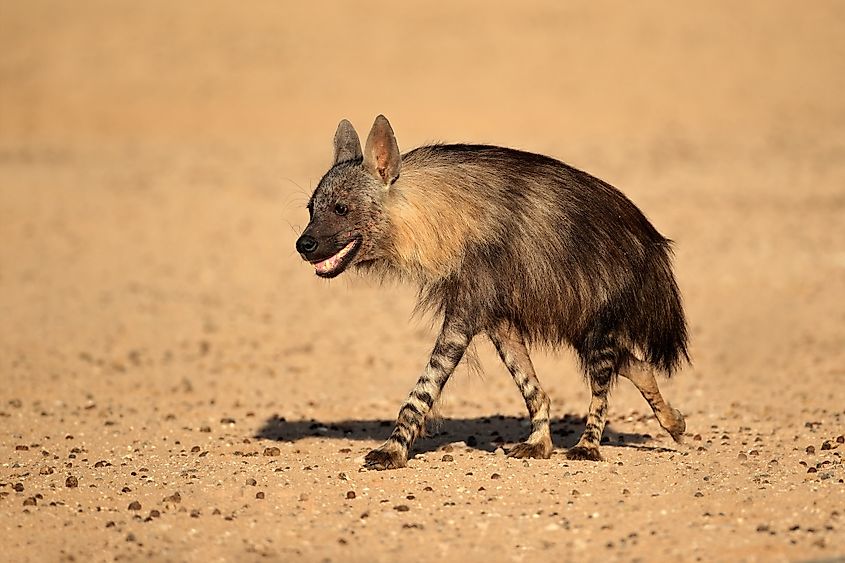
In fact, of the four hyena species, the striped hyena and the brown hyena are labeled as "Near Threatened" on the IUCN Red List while the others are "Least Concern" species. IUCN estimates suggest that there are around 5,000 to 10,000 mature individuals of striped hyena species in the wild. In Africa, the overlap of range between the striped hyenas, spotted hyenas, and aardwolf often make surveys increasingly difficult as few people know how to differentiate these species. The nocturnal, solitary, and elusive nature of these animals complicate things further.
Misunderstood, Maligned, And Ignored: Hyenas Suffer Silently
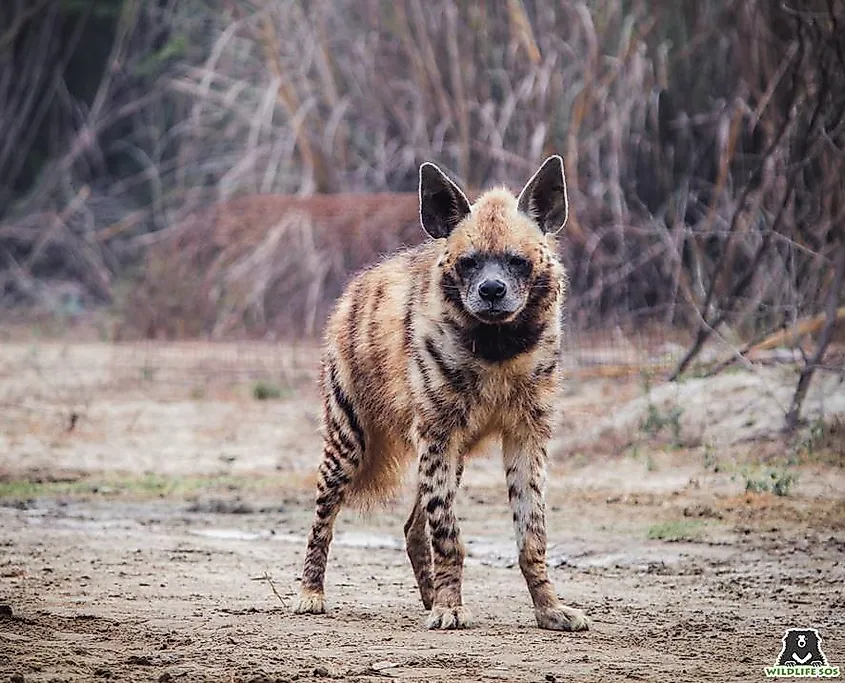
In general, humans have always looked down upon scavengers/carrion feeders like crows, vultures, and worms - ones associated with dead/decaying matter - as filthy, savage, and devilish. Striped hyenas are no exception. Moreover, the fact that the hind legs of hyenas are shorter than their forelegs giving them an awkward appearance, allow humans to label them as dim-witted, manipulative creatures. However, such a physiological adaptation actually makes the hyenas excellent endurance runners, allowing them to run long distances.
Across cultures and continents, folklores have also often depicted hyenas as brutish creatures to be shunned at all costs. Some tales describe how dark witches use hyenas as their mounts while others narrate how hyenas kidnap human children to feast on them. All quite nasty, one would say!
Striped hyenas living in India also have their share of misfortunes as evident from what Satyanarayan had to say:
"Due to their scavenging habits, people tend to see them as harbingers of evil. They are considered to be mounts of witches in some parts of the country. Seen as malicious, devilish, and often associated with witchcraft, hyenas have been widely misrepresented in culture, folklore, and even in movies," he exclaimed.
Indeed, one cannot forget The Lion King remake where hyenas have been portrayed as sinister, cringing, and crafty creatures acting as sidekicks to the rogue lion Scar.
While hyenas might not understand what we say about them and feel insulted, our perception of these creatures has far-reaching, disastrous effects on their survival and ours as well. The lack of scientific research studies and reliable census data on these animals speaks volumes about our indifference towards them. In makes the successful conservation of hyenas a near to impossible task. Take, for example, the case of the striped hyena in India. According to Satyanarayan:
"The striped hyena is an underrated species that deserves more conservation attention. They are protected under Schedule III of the Wildlife Protection Act, 1972 but not much research has been carried out about this elusive species. Issues around keystone species such as the tiger or the elephant tend to get a bigger conservation platform," he stated.
According to him, man-animal conflict, poisoning, habitat destruction, hunting, and poaching for body parts are the biggest threats to the striped hyena populations in India. The skins of this species are illegally traded and body parts are used in traditional medicine.
Involved in the rescue of hyenas from various conflict situations, the concerned team of Wildlife SOS also faces numerous practical challenges during the rescue operations which reveal a lot about the plight of the striped hyenas and people's judgment of these animals.
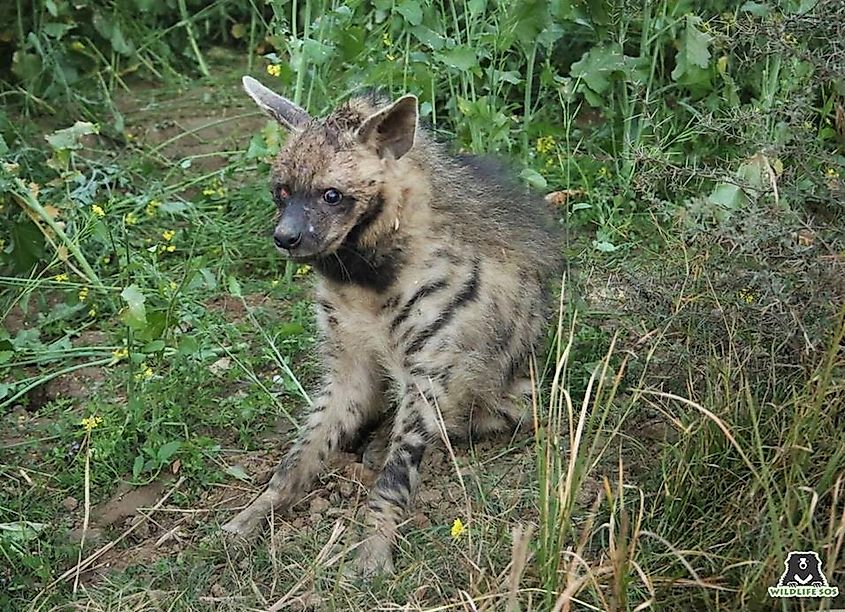
"The most common challenge we face is changing people’s mindset. In most cases, we rescue hyenas that were victims of human-animal conflict or poaching. Most of these conflict situations arise due to fear and misconceptions about this species. Another big challenge is crowd control. People are always curious to get a closer look at the animal and they try to take pictures of it while the rescue operation is being carried out. Such actions are dangerous and may lead to untoward accidents, if not managed properly," revealed Satyanarayan.
"In a recent incident, an approximately 3-year-old male striped hyena was brutally attacked in a village in Uttar Pradesh and brought to Wildlife SOS’ center for treatment. The chances of survival of the hyena appeared bleak as the animal had sustained severe spinal fracture leading to hind limb paralysis. Despite our best efforts, the hyena succumbed to its injuries. Over the years, we have seen some terrible situations, where the hyenas were so violently attacked that they ended up with severe head trauma and ruptured eyes. Incidents such as this make it imperative for us to spread awareness about the species and sensitize the public to their plight, as they struggle to gain a foothold in the shrinking forests. There is also a need to teach them appropriate measures to avoid such brutal conflicts," continued Satyanarayan.
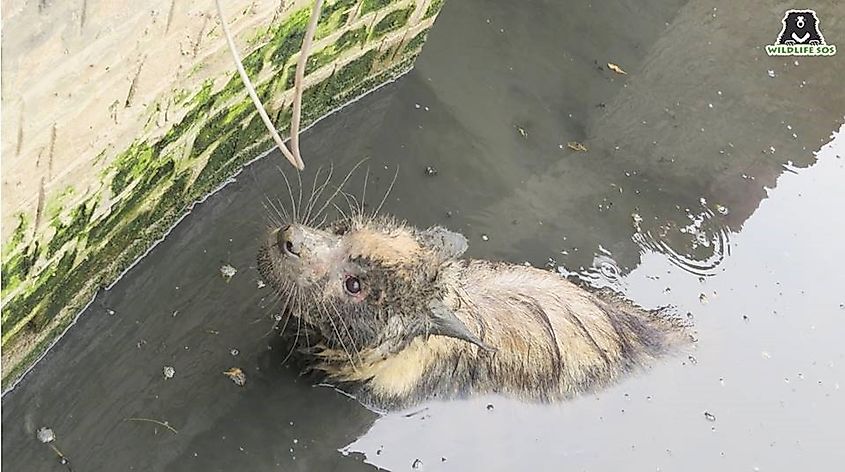
Reports such as the ones mentioned above are not just common in India but in other parts of the hyena's range as well. These misunderstood animals are given little love and plenty of hatred leading to their silent suffering and loss. Hence, conservation of the hyenas also attracts spare attention.
Intriguing And Intelligent: Hyenas Have A Purpose In Nature
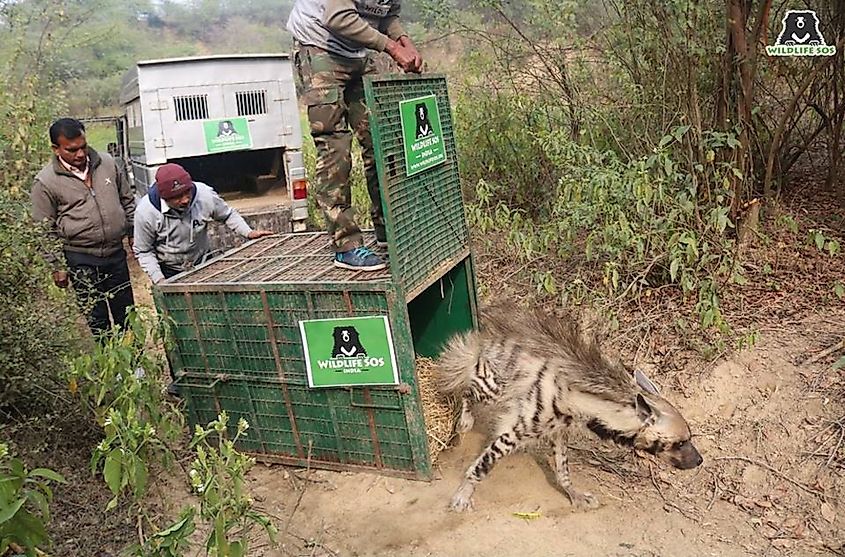
While the masses continue to disregard the hyenas, those who have studied these animals in detail recognize them as social beings with high levels of intellect. CT scan tests have compared hyena brains with those of some primates and revealed astounding results. Similar to primates, the brain region associated with complex decision-making appears to be enlarged in hyena brains. Hyenas have also beaten chimpanzees in some cooperative problem-solving tests. Spotted hyenas are known for their highly developed social pack-behavior where they can be very co-operative while hunting. Each species of hyenas also have their distinct ecological roles. They are all part of the food chain that keeps the ecosystem in balance.
"Striped hyenas play a very vital role in maintaining an ecosystem – apart from getting rid of biological waste by their scavenger habits; they also act as pest control. The hyena's digestive system has adapted to maximize the nutritional value of animal remains; only the horns, hooves, and hair are regurgitated," informed Satyanarayan.
"A healthy ecosystem depends on the balance between species, so the decline of an animal, especially one that plays such an important role in keeping an ecosystem clean and free of diseases should raise a modicum of alarm," he warned.











